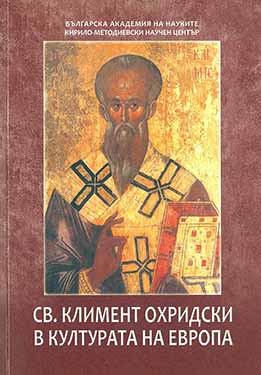Византийско-славянская культура и религиозность в Словакии – традиция или импорт?
Byzantine-Slavic Culture and Religiousness in Slovakia – Tradition or Import?
Author(s): Peter Žeňuch
Subject(s): Language studies, Language and Literature Studies
Published by: Кирило-Методиевски научен център при Българска академия на науките
Summary/Abstract: Heritage of the Great Moravian church with Byzantine-Slavic spirituality and rituals found appropriate conditions for their continuity, especially among South and East Slavs, where it was fully applied and a rich Slavic written culture was created. Later overlaps and influences of this tradition through contacts with South and East Slavic environment were significantly applied also in the Slovak environment, particularly through the Wallachian settlement based on the Wallachian law. In Hungary this settlement is associated with Byzantine confessional milieu with the active participation of the autochthonous Slovak element. Thus through this contact Slovak population merged with Byzantine-Slavic religious milieu again and contributed to the application of its cultural and religious traditions. Sources written in Cyrillic provide evidence of development and formation of the Byzantine-Slavic culture and tradition in Slovakia as well as in Slovak ethnic society. Cyrillic sources represent an integral part of Slovak national culture not only from the linguistic point of view bur also depending either from their provenance or on the described realia. Against this background, religious tradition of the local church of the Byzantine-Slavic rite in Slovakia is perceived as an expression of the oldest institutionalized Christian tradition. In the paper we attempt to point out at the interaction between the oldest Christian horizon and Byzantine-Slavic cultural and confessional milieu in Slovakia. Indeed, Byzantine-Slavic rite in Slovakia represents an important and integral part of confessional identity of its inhabitants, though, the Latin cultural and liturgical traditions in this environment finally prevailed after the fall of Great Moravia.
Book: Свети Климент Охридски в културата на Европа
- Page Range: 143-159
- Page Count: 17
- Publication Year: 2018
- Language: Russian
- Content File-PDF

